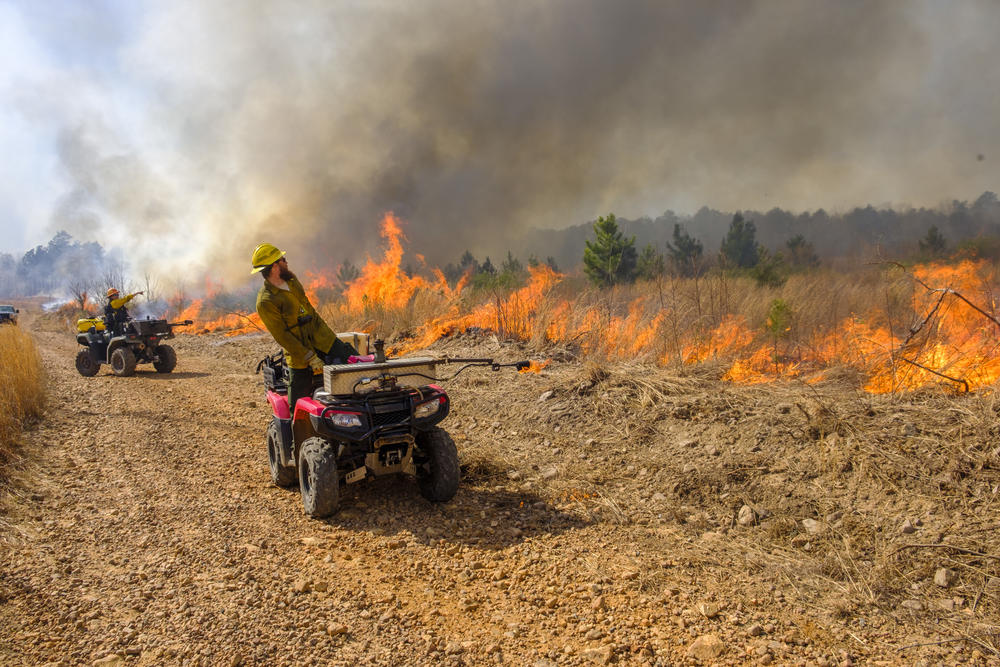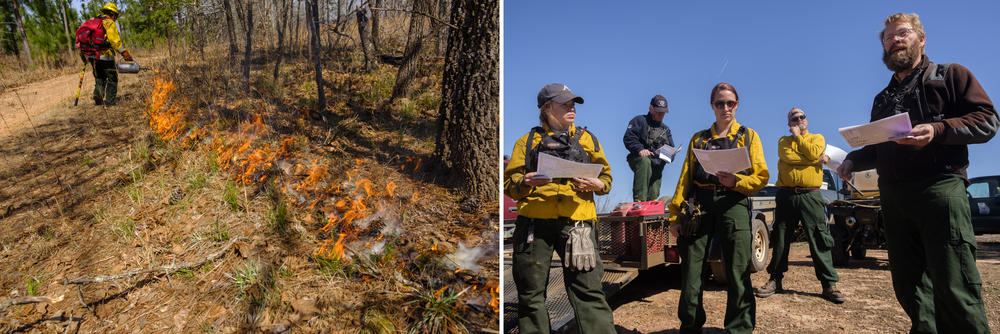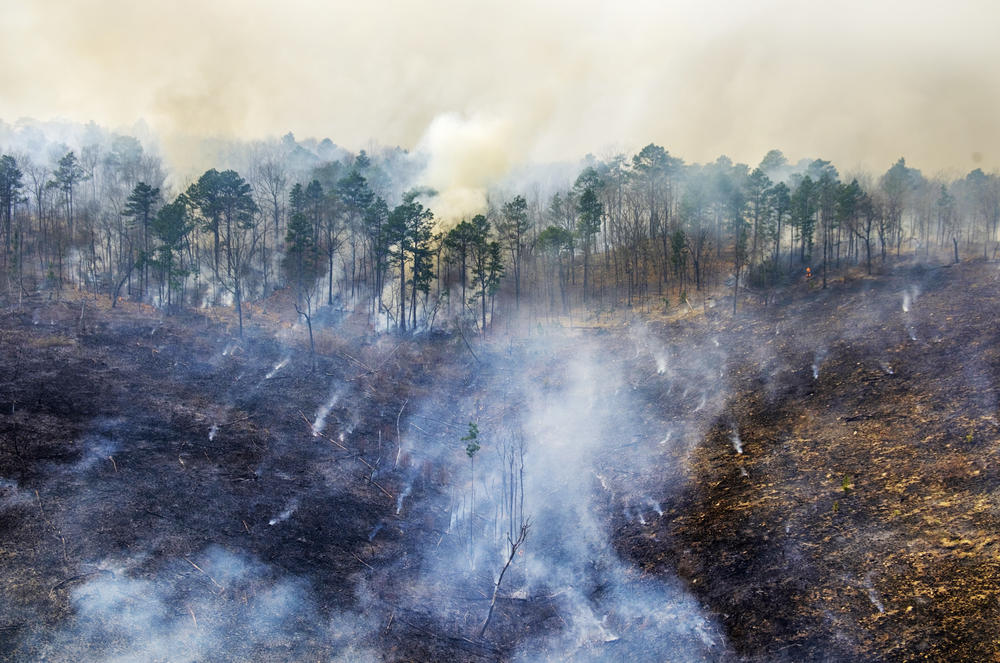Section Branding
Header Content
How The South Fights Fire With Fire, And What The West Can Learn
Primary Content
It was a superb Spring day in the mountains of west Georgia, with bluebird skies and a light breeze through the longleaf pines, when a helicopter rained fire from the sky.
A machine on the side of the helicopter was dropping thousands of ping pong ball shaped incendiary devices as it criss-crossed a mix of mature, longleaf pine trees, some mature oaks and the grasses left from a timber company clearcut. When the balls hit the grass, fire bloomed in a deep orange that turned into rings of flame enclosing scorched vegetation.
How The South Fights Fire With Fire, And What The West Can Learn
As the flames crept, a pair of firefighters waited for just the right moment to zoom up a gravel road on ATVs fitted with flamethrowers. When they did, they set fire to grass at the edge of the road, robbing the main blaze of fuel and stopping it dead. It was all a part of Nathan Klaus' plan.
“That old growth is out of the woods,” Nathan Klaus told firefighters before they set out with drip torches earlier in the day. “It hopefully will never go without fire again, and it certainly won’t be at the risk it was for wildfire.”
Klaus is an ornithologist with the Georgia Department of Natural Resources when he isn’t the burn boss on the 10,000 acres or so where he oversees fires every year. The DNR has been burning these woods at Sprewell Bluff for 17 years. Now there’s no more duff, or kindling for wildfire, on the forest floor, the kind of stuff that fuels the massive wildfires in the West.
Years ago, Klaus saw that some of the birds he was charged with protecting depended on frequent, low severity fire to create their preferred habitat. Now, one of those rare birds, the Bachman’s Sparrow is back in this forest. It’s been missing here since the 1960s. There are other animals, too.
“We’ve got bobwhite quail, we’re hoping for northern pine snake, there are some rare native plants in those woods.” Klaus told the firefighters. At least one firefighter made their own list in a notebook of the animals helped.
Most years Georgia intentionally burns around a million acres of forest. That’s about 30 times the size of California’s prescribed burns. Florida performs prescribed burns over twice that much land. That’s according to data from the national interagency fire center and compiled by the non-profit Climate Central.
So why does the South still burn so much more of its forests? Walker Rivers says a lot of that has to do with who owns the trees.
Rivers is a consulting forester by trade. A fire freelancer. He’s been setting prescribed burns for private landowners for 40 seasons. On recent morning in a plot in Jasper County, where he’s been burning for its owners since 1995, the pines were tall, grasses were low and blackberries were plenty. The blackberries are for the turkeys.
“They love blackberries,” Rivers said. They're just at the right height. They walk in there and just pluck them.”
That’s good, since the the owners here love hunting as much as they love selling pine trees.
According to the Georgia Forestry Commission, 90% of the state’s forests are privately owned. Trees are family wealth in the South. When a plot of pine trees matures about once a generation, a family will cut them and cash in. But the slow growing, knotty hardwoods crowd out the pines. So they, along with the duff that fuels wildfires, are burnt out along the way.
That motive to burn to grow the best trees for market often works in conjunction with the motives of scientists like Nathan Klaus who burn to protect habitat.
Rivers says, out West where the federal government owns most of the land there isn't the same profit motive to burn out the wildfire kindling.
“They need to be managing the fuel but they don't do it,” he said “It's hands off. So you see the results of that.”
In the Pacific Northwest, the result has been decades of wildfire fuel piling up largely unchecked in the region’s forests. That’s the major finding of a new study by Ryan Haugo of the Nature Conservancy and others.
Haugo said climate change will only make western wildfires more destructive in the future as it makes forests already at risk for catastrophic fire hotter and drier.
“That's definitely a concern of ours; that with extensive high-severity fire, some areas that are forest now will no longer be forest in the future,” Haugo said.
Haugo said grasses could take over where Ponderosa pines stand today. To prevent that, he says western states need to shift back to more controlled burning.
They could look to the South to see how it’s done.





